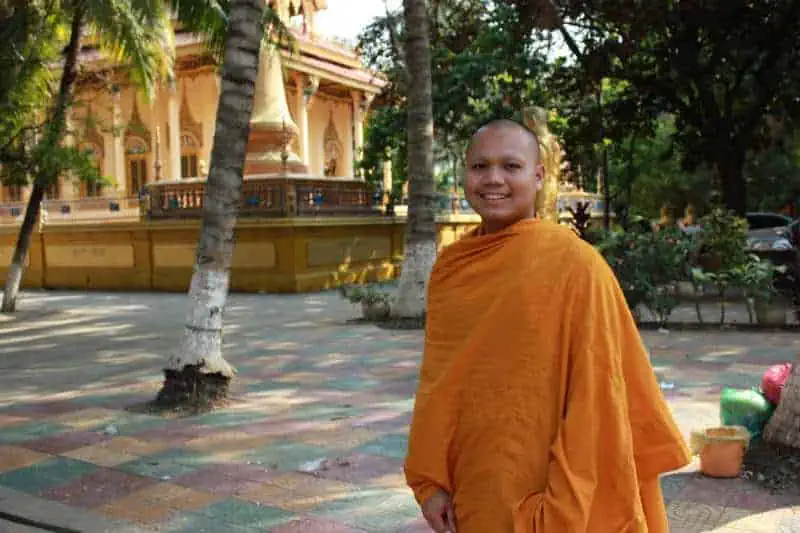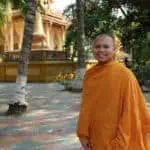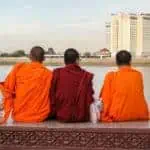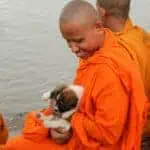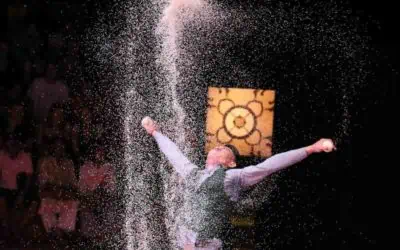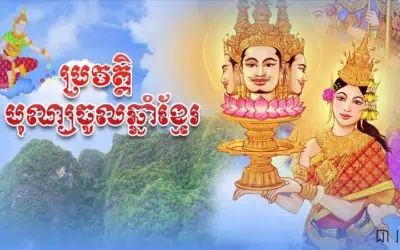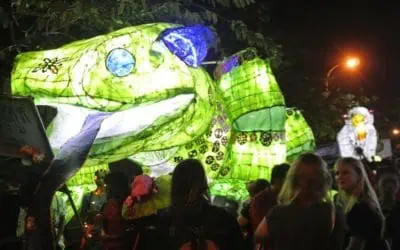Exploring the Life of Cambodian Monks
By Emily Martin
If you’ve ever explored the beauty of Southeast Asia, chances are your travel album is filled with captivating snapshots of monks in their vibrant orange robes, under their yellow umbrellas, and amidst their serene processions during the enchanting dawn and dusk hours. But, there’s a lot more to a monk’s life in Cambodia than what meets the tourist’s eye.
Suong Chooses a Monk’s Life
Meet Suong, a young monk at Wat Piphetthearam in Battambang. He embarked on his spiritual journey at a tender age, driven by a simple desire for education. Suong recalls, “I became a monk when I was just a child. My mother asked me if I wanted to become a monk, and I asked her if I could study at the pagoda. She said, ‘Why not?’ Living with my mother meant a life of hard work to make ends meet, with little time for school. But at the pagoda, I could immerse myself in learning alongside the monks. Plus, we had a roof over our heads and food on our plates – that’s a good deal.”
Suong’s story isn’t unique; many young boys become monks due to similar circumstances. Often, they arrive at the pagoda because their parents have passed away, leaving them with no other means of support. Here, they find refuge without the stigma that can sometimes accompany seeking help from other organizations.
A Deeper Understanding of Buddhism
Another significant reason people choose the monastic path is their desire to follow in their parents’ footsteps or deepen their understanding of Buddhism. Suong explains, “They believe Buddhism is beneficial for them. Its teachings cleanse the mind and bring peace.”
Being part of a pagoda opens doors to numerous opportunities that might otherwise remain closed. Suong elaborates, “In the pagoda, you can study not only Buddhism but also other subjects. Some schools offer free education to monks, giving them a chance to catch up on their studies.”
Education and Daily Activities in a Monk’s Life
In Cambodia, young parents often have to interrupt their education to support their children. When they eventually return to school, they find themselves years behind their peers. Suong notes, “This can be embarrassing, and they may feel out of place among younger students. That’s where the pagoda steps in, offering a judgment-free environment for learning. We teach everyone, from children to adults to the elderly – anyone eager to learn.”
Living as a monk, however, comes with its set of rules and guidelines. Buddhist monks in Cambodia reside in wats, which encompass living quarters, dining halls, and classrooms. They follow a disciplined lifestyle, adhering to no fewer than 227 rules. These rules prohibit activities such as eating after midday, sleeping on overly comfortable beds, engaging in entertainment like dancing or watching movies, and handling money. Monks are also discouraged from participating in politics, although this has evolved over time. Since the 1980s, some Cambodian Buddhist monks have taken an active role in politics.
Monks play a significant role in Cambodian society, performing ceremonies for births, deaths, and weddings. Moreover, they provide emotional and social support, much like clergy in other religions. Each morning, monks venture out from the temple to collect alms from the community. In return, they offer blessings to those who give. Suong explains, “The water blessings you often see actually originate from Hinduism, as Buddhism and Hinduism in Cambodia have intertwined.”
A Glimpse into Cambodian Buddhist History
Before Cambodia adopted its present name, it was known as the Funan Kingdom, influenced heavily by Indian culture. During this period, Funan was predominantly Hindu, with Buddhism serving as a secondary religion. Buddhism began to gain prominence and influence Cambodian religion around 450 CE.
Buddhism thrived during the Angkor Kingdom era, particularly under the reign of King Jayavarman VII, a devoted Buddhist. Jayavarman VII’s rule between 1181 and 1215 saw a concerted effort to establish Buddhism as the state religion, viewed as a means to save the Khmer people. His efforts were successful, and Theravada Buddhism, one of the oldest Buddhist schools, became one of the primary religions at Angkor Wat.
However, the Khmer Rouge regime from 1975 to 1979 dealt a devastating blow to Cambodian Buddhism. Monks were forcibly removed from wats and subjected to manual labor, much like the rest of the population. Religion was prohibited, and temples were damaged or destroyed. Tragically, it is estimated that up to 50,000 monks lost their lives during this period.
Today, Buddhism continues to hold a profound influence in Cambodian society and daily life, even as it recovers from the loss of many leaders and teachers during the Khmer Rouge era. In 2006, approximately 60,000 Buddhist novices were estimated to be in Cambodia, and ongoing efforts to restore temples and reestablish Buddhism are in progress.
Engaging with Monks in Cambodia
So, the next time you’re captivated by the sight of a monk on the streets or at a pagoda in Cambodia, don’t hesitate to snap a photo – but consider asking for permission first. As Suong puts it, “I don’t mind it actually, but some other monks might. It’s great that people from countries without Buddhism are interested. They can capture my photo and share it with friends and family, introducing them to something new and beautiful.”
In the end, it’s a small gesture that can make a monk’s day a little brighter. Why not give it a try on your next encounter with a monk in Cambodia?
Find out more about the history of circus in Cambodia
Learn more about two of the large cultural festivals in Cambodia – Pchum Ben and Bon Om Touk

